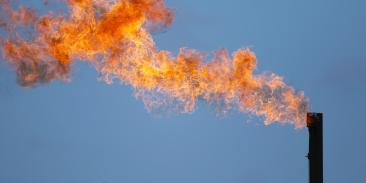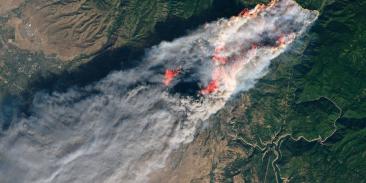New EPA Numbers Underscore Need for Methane Standards
NEWS RELEASE
Data released today by the Environmental Protection Agency once again underscores the need for strong federal rules to reduce the seven million tons of methane pollution U.S. oil and gas operations release into the atmosphere every year. New figures from the U.S. Greenhouse Gas Reporting Program showed a modest decline in methane emissions, with the largest reductions resulting from “green completion” practices required for new wells under federal clean air standards issued in 2012. The statistics also show an increase in overall greenhouse pollution from oil and gas activities.
“This data shows that regulations work, and promises of voluntary action don’t,” said Matt Watson, Associate Vice President of EDF’s Climate & Energy Program. “The largest methane reductions come from a practice that is subject to national standards, while the biggest increases come from sources that remain largely unregulated.”
In August, EPA proposed new rules limiting methane emissions from new and modified oil and gas facilities, as part of an ongoing effort to achieve a national emissions reduction goal of 40 to 45 percent over the next 10 years. EPA also proposed guidelines for states to reduce harmful emissions from existing oil and gas facilities in areas that are not meeting national air quality standards for ozone.
“Industry says they can fix the problem on a voluntary basis. The data says they aren’t making anywhere near the progress they need to” Watson said. “Leading states have enacted similar rules for both new and existing oil and gas facilities, and industry has had no trouble meeting them. It’s time to put a national framework in place so operators in every state are taking common sense steps to protect public health and the environment.”
EPA’s Greenhouse Gas Reporting Program is part of a law signed by President Bush in 2007. The program requires reporting by major industrial sources that emit 25,000 metric tons of carbon dioxide equivalent or more per year – the same amount as consuming 131 rail cars of coal or 58,000 barrels of oil. The data reported today show that about half of the nation’s wells are reporting to the program, and, while this doesn’t provide a comprehensive picture of emissions, the data can help understand emissions trends from significant sources.
With more than 3 million members, Environmental Defense Fund creates transformational solutions to the most serious environmental problems. To do so, EDF links science, economics, law, and innovative private-sector partnerships to turn solutions into action. edf.org
Media Contact
Latest press releases
-
Court Rules New York Must Implement State Climate Law and Deliver Swift Action
October 24, 2025 -
EDF Goes to Court to Help Defend California Climate Risk Reporting Laws That Protect People from Financial Damage
October 24, 2025 -
Oregon Water Partnership Applauds Gov. Kotek’s Executive Order to Promote Resilience of Communities and Natural Working Lands and Waters
October 23, 2025 -
Community, Health and Environmental Groups Sue to Stop President Trump’s Unlawful Toxic Air Pollution Exemptions
October 22, 2025 -
Emerging Farm Resiliency Practice Provides Significant Farm-Level and Public Benefits, New Report from EDF
October 21, 2025 -
IMO Postpones Adoption of Net Zero Framework, Delaying Global Action to Decarbonize Shipping
October 17, 2025










